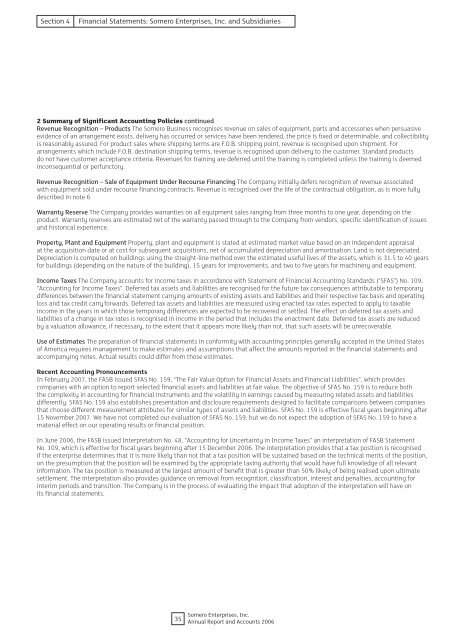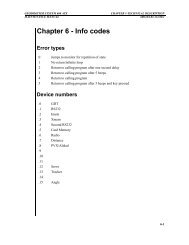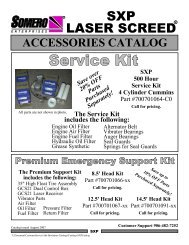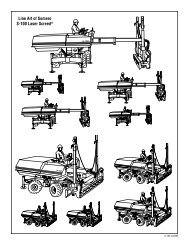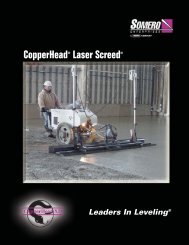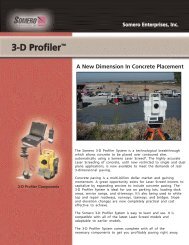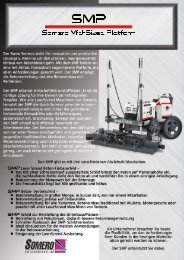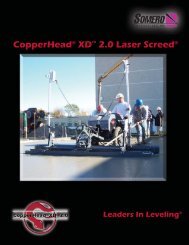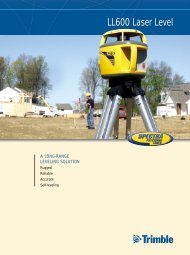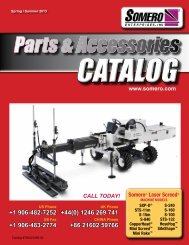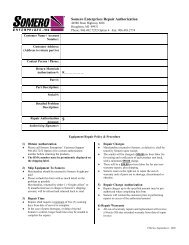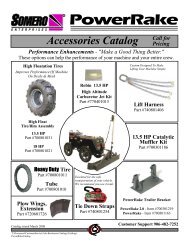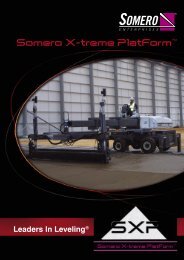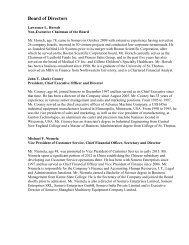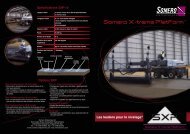PDF - Somero Enterprises
PDF - Somero Enterprises
PDF - Somero Enterprises
- No tags were found...
Create successful ePaper yourself
Turn your PDF publications into a flip-book with our unique Google optimized e-Paper software.
Section 4Financial Statements: <strong>Somero</strong> <strong>Enterprises</strong>, Inc. and Subsidiaries2 Summary of Significant Accounting Policies continuedRevenue Recognition – Products The <strong>Somero</strong> Business recognises revenue on sales of equipment, parts and accessories when persuasiveevidence of an arrangement exists, delivery has occurred or services have been rendered, the price is fixed or determinable, and collectibilityis reasonably assured. For product sales where shipping terms are F.O.B. shipping point, revenue is recognised upon shipment. Forarrangements which include F.O.B. destination shipping terms, revenue is recognised upon delivery to the customer. Standard productsdo not have customer acceptance criteria. Revenues for training are deferred until the training is completed unless the training is deemedinconsequential or perfunctory.Revenue Recognition – Sale of Equipment Under Recourse Financing The Company initially defers recognition of revenue associatedwith equipment sold under recourse financing contracts. Revenue is recognised over the life of the contractual obligation, as is more fullydescribed in note 6.Warranty Reserve The Company provides warranties on all equipment sales ranging from three months to one year, depending on theproduct. Warranty reserves are estimated net of the warranty passed through to the Company from vendors, specific identification of issuesand historical experience.Property, Plant and Equipment Property, plant and equipment is stated at estimated market value based on an independent appraisalat the acquisition date or at cost for subsequent acquisitions, net of accumulated depreciation and amortisation. Land is not depreciated.Depreciation is computed on buildings using the straight-line method over the estimated useful lives of the assets, which is 31.5 to 40 yearsfor buildings (depending on the nature of the building), 15 years for improvements, and two to five years for machinery and equipment.Income Taxes The Company accounts for income taxes in accordance with Statement of Financial Accounting Standards (“SFAS”) No. 109,“Accounting for Income Taxes”. Deferred tax assets and liabilities are recognised for the future tax consequences attributable to temporarydifferences between the financial statement carrying amounts of existing assets and liabilities and their respective tax basis and operatingloss and tax credit carryforwards. Deferred tax assets and liabilities are measured using enacted tax rates expected to apply to taxableincome in the years in which those temporary differences are expected to be recovered or settled. The effect on deferred tax assets andliabilities of a change in tax rates is recognised in income in the period that includes the enactment date. Deferred tax assets are reducedby a valuation allowance, if necessary, to the extent that it appears more likely than not, that such assets will be unrecoverable.Use of Estimates The preparation of financial statements in conformity with accounting principles generally accepted in the United Statesof America requires management to make estimates and assumptions that affect the amounts reported in the financial statements andaccompanying notes. Actual results could differ from those estimates.Recent Accounting PronouncementsIn February 2007, the FASB issued SFAS No. 159, “The Fair Value Option for Financial Assets and Financial Liabilities”, which providescompanies with an option to report selected financial assets and liabilities at fair value. The objective of SFAS No. 159 is to reduce boththe complexity in accounting for financial instruments and the volatility in earnings caused by measuring related assets and liabilitiesdifferently. SFAS No. 159 also establishes presentation and disclosure requirements designed to facilitate comparisons between companiesthat choose different measurement attributes for similar types of assets and liabilities. SFAS No. 159 is effective fiscal years beginning after15 November 2007. We have not completed our evaluation of SFAS No. 159, but we do not expect the adoption of SFAS No. 159 to have amaterial effect on our operating results or financial position.In June 2006, the FASB issued Interpretation No. 48, “Accounting for Uncertainty in Income Taxes” an interpretation of FASB StatementNo. 109, which is effective for fiscal years beginning after 15 December 2006. The interpretation provides that a tax position is recognisedif the enterprise determines that it is more likely than not that a tax position will be sustained based on the technical merits of the position,on the presumption that the position will be examined by the appropriate taxing authority that would have full knowledge of all relevantinformation. The tax position is measured at the largest amount of benefit that is greater than 50% likely of being realised upon ultimatesettlement. The interpretation also provides guidance on removal from recognition, classification, interest and penalties, accounting forinterim periods and transition. The Company is in the process of evaluating the impact that adoption of the interpretation will have onits financial statements.35<strong>Somero</strong> <strong>Enterprises</strong>, Inc.Annual Report and Accounts 2006


